How and when to treat apple trees for pests
There are no visible pests on the apple tree. They are both polyphagous and apple-specific, but, however, with an acute shortage of food supply, they can also feed on other fruit trees (most often on pears). The article describes in detail what drugs and at what time apple trees should be treated against pests, and what folk remedies can be used.
| Content:
|
How to deal with apple tree pests
Aphids
Many different types of aphids feed on the apple tree: green, gray, striped, red gall, peach, etc.
Description of the pest
Most species of aphids have migratory forms and in summer fly to other cultivated and wild plants (viburnum, barberry, currants, etc.), but there are also aphids that feed only on apple trees. During the year, migratory forms give birth from 3 to 7 generations; as a rule, spring and autumn generations feed on apple and pear trees, and summer generations feed on other plants. Non-migratory aphids feed only on apple trees. She gives birth to up to 15 generations per season. This aphid is the most harmful.
|
All types of aphids are small sucking insects that feed on the sap of young leaves and buds. |
In autumn, all species lay eggs on trees under bark flakes; in spring, young, voracious larvae hatch from them.
Nature of damage
Aphids suck juice from buds and young leaves, located, as a rule, at the tops of shoots. Damaged leaves thicken and curl inward, and inside them, like in a cocoon, a colony of aphids sits and feeds. Some species (red gall, striped) cause a characteristic bright red or pink color on damaged leaves. Severely damaged leaves dry out and fall off, and the entire colony moves to a new shoot. The tops of the shoots also do not develop and dry out. When present in large numbers, aphids can also damage fruits. Small red spots appear on the apples.
Control measures
It is imperative to combat this pest; aphids are very persistent and constantly appear on trees and shrubs throughout the summer. Therefore, during the growing season, regular treatments are done every 10-14 days. Not only apple trees are sprayed, but also all fruit and ornamental trees, as well as shrubs and flowers.
- Spraying with broad-spectrum insecticides: Karbofos, Iskra, Aktara, Aktellik, Inta-Vir, etc.
- Application of the biological product Fitoverm. It is used when the number of pests is small.
If the apple tree is tall, then it will not be possible to process it all from the top to the lower branches. Treat branches that can be reached by the spray jet. In this case, you just have to make sure that the pest population is minimal.
|
In the photo there are aphids on an apple tree |
Folk remedies
Since aphids have a delicate and soft body, traditional methods help a lot. But it should be taken into account that they are only contact means, i.e. act upon direct contact with pests on the body. This is their significant disadvantage compared to chemicals.
- Concentrated soda solution (4 tbsp per 5 liters of water). The treatment is carried out at the first appearance of aphids, while they have not yet reproduced.
- 10 ml (vial) of iodine is diluted in 5 liters of water and the apple trees are treated.
- Infusion of onion peel. 100-200 g of husks are poured into 1 liter of water and left for 24 hours. Then the infusion is filtered and diluted with water in a ratio of 2:1. Apple trees are treated in cloudy weather or in the evening.
For the same purpose, you can use other hot substances: infusion of hot pepper, tomato tops, infusion of tobacco dust, etc. Spraying is always carried out from the underside of the leaves.It is important that the solution hits the aphids directly, otherwise it will not be effective. When the leaf has already twisted into a tube, it makes no sense to treat it with folk remedies.
You can use ladybugs in the fight against all types of aphids. One ladybug larva can eat up to 20-40 aphids. Adult insects also eat pests, but in smaller quantities. But, firstly, with a massive invasion of aphids, the cows will not be able to cope. Secondly, the ladybug larva looks scary and summer residents often destroy it themselves, not knowing that it is their helper and not their enemy. If there are ladybugs on the tree, then chemicals cannot be used!
|
Ladybug larva |
Prevention there is no such thing. No matter how much you weed the weeds or spray the bushes and trees, aphids will still fly in and settle somewhere in the dacha, even on some small bush. But it will scatter all over the garden. Therefore, the main prevention is the destruction of pests as soon as they are detected.
Ants often spread aphids as they collect their sweet secretions. Therefore, ants are not allowed to appear on the site.
Apple psyllid
The apple tree pest is very similar to green aphids. It differs from it in its slightly larger size, lighter color and slow reproduction (1 generation of pests is born per year).
Description of the pest
The psyllid or honeydew is a small insect slightly larger than an aphid. The body is green, more elongated than that of aphids. The insect looks like an exclamation point without a period. The eggs overwinter under the bud scales. The larvae that emerge in the spring begin to feed very early. Adult insects appear after flowering. They scatter all over the garden.Pests live in regions with moderate temperatures and high humidity.
|
The copperhead is not found in steppe regions because it is too hot and dry for it. In areas where the pest is distributed, its numbers are significantly reduced in dry and hot summers. |
Nature of damage
The larvae suck the juice from the buds, leaves, young soft petioles and peduncles. The damaged parts become covered with white balls of sweet sticky secretions. Damaged buds do not bloom, the flowers dry out and fall off. When the pest population is high, the yield decreases and the quality of the fruit deteriorates.
Ways to combat apple psyllid
Broad-spectrum insecticides are used to control honeydews. Treatments begin when the buds open, when the larvae emerge, and continue throughout the summer.
- Karbofos. Apple trees are treated against the pest in early spring. Destroys larvae, which are the most harmful. Subsequently, safer drugs are used. The use of Karbofos in summer is possible only when the number of pests is very high.
- Spark. Nowadays, drugs with different active ingredients are produced under this brand. For treatment against slowworm, use Iskra with the active ingredient imidocloprid, or cypermethrin + permethrin. And also Iskra bio, the active ingredient is Avertin. Iskra, the active ingredient of which is malathion, is karbofos under the brand name “Iskra”. Works quickly and reliably.
- Fitoverm. Used when the number of insects is small. Biological pesticide. It acts somewhat more slowly, but inevitably.
The number of insects depends on the weather. In some years, the copperhead does not appear in gardens.
|
Psyllad on apple tree leaves |
Folk remedies used against the most harmful stage - the larvae. The trees are sprayed with a rich pink solution of potassium permanganate. You can use 9% table vinegar.
Very stinging agents, which are used to combat aphids, are not used against honeydew larvae, since the use of such agents on opening buds and buds can damage them and lead to the falling of flowers.
Prevention does not give the desired effect due to the peculiarities of the life of insect pests (they quickly scatter throughout the garden and into neighboring areas). Heavily thickened crowns are thinned out. Then they will be better ventilated, which will create uncomfortable living conditions for the psyllid.
Slobbering Penny
Polyphagous pest. Damages many fruit trees (apple, pear, plum, peach), shrubs, grapes, strawberries (there are especially many pests on them), vegetables, flowers, grains, and wild plants.
Description of the pest
A large, light yellow to black insect with wings that can jump and fly. The larvae are initially white but become greenish-yellow as they age. A characteristic feature is red eyes. The eggs overwinter on grass and in the tissues of fallen leaves. One generation of pests hatches per season.
|
Slobbering pennice on an apple tree |
Nature of damage
The larva secretes a saliva-like foamy liquid in which it feeds. For normal life, it needs a moist environment, and foam protects it from drying out. The pest damages leaf petioles and leaves. Usually feeds in leaf forks. Damaged leaves wrinkle and subsequently dry out. This leads to a slowdown in shoot development, especially in young apple trees.
Control measures
The pest is most active in the first half of summer.Closer to autumn, insects switch to wild grasses. Systemic pesticides are used to control pentilia. The pest is protected from the action of contact pesticides by a foam shell.
- Karbofos, Inta-Vir, Iskra. Spray apple trees when the pest multiplies massively.
- Aktellik. Used for small numbers of insects.
- Alpha Chance. Fast and reliable results.
In addition to apple trees, other trees and shrubs are sprayed. Particular attention is paid to currants (especially black), strawberries, beets, and dahlias.
|
Penny loves wet weather. In hot summers, the number of the pest decreases. |
Prevention allows you to reduce the number of pests, but it is impossible to completely protect the garden from it.
- Mowing grass around the perimeter of the site.
- Regular weeding.
- Thinning tree crowns.
Apple flower beetle
Apple tree monopest. But if the food supply is insufficient, it can damage pear and, very rarely, hawthorn. At all stages of development it feeds on various parts of the apple tree. Distributed everywhere.
Description of the pest
A small brownish-brown beetle with an elongated head in the form of a proboscis, with red-brown legs and antennae. The beetles overwinter in cracks in the bark, under fallen leaves, in the ground at a depth of up to 3 cm next to the root collar. Wintering always takes place near the apple tree. After the snow melts at temperatures above 10 °C, the beetles come to the surface and begin to feed on the apple tree.
The female lays eggs in flower buds. After a week, the larvae emerge and continue feeding in the bud. Having finished feeding, the larva pupates.
|
Flower beetle on apple leaves |
Mass flight of beetles occurs during the period of shedding of ovaries. The beetles feed on the apple tree for a while and then go into cracks in the bark.In the middle zone this is mid-to-late July, in the southern steppe regions - the end of June. In autumn, a new generation of pests leaves for the winter.
Nature of damage
The pest damages the apple tree at all stages of development.
Beetles that emerge after wintering damage the budding buds and buds by gnawing holes in them. The female gnaws a hole in the buds and lays eggs inside them.
The larvae that emerge from the egg continue to feed inside the bud, gnawing first the stamens and pistil, and then the receptacle. The former bud turns into a brown cap. Having finished feeding, the larva pupates inside the bud.
The emerging young beetles emerge, gnawing a hole in the cap of the bud. They feed on young leaves for 23-27 days, gnawing holes in them, but with a poor food supply they can completely eat the leaves. Small holes are chewed out on developing fruits.
|
When the number of beetles is high, they quickly spread over large areas. |
The pest causes significant damage to the apple tree, significantly reducing its yield. This is especially noticeable during the dormant years of apple trees, when the number of buds is small. In such years, with a large number of the flower beetle, you can be left without a harvest.
How to deal with a pest
Measures to combat the flower beetle are taken as soon as the beetles are noticed.
- Calypso, Karbofos, Decis, Aktara, Kinmiks.
- During the period when beetles emerge, pests are collected manually. They are shaken off onto material or newspapers spread under the apple tree.
- Placing sticky traps to catch beetles. In spring they are placed at the base of the trunk no higher than 2-3 cm from the ground. In summer they are placed along the trunk, where the bark is most covered with cracks.
Apple trees are treated with insecticides at the following times:
- in late April-early May during the period when overwintered beetles emerge, when the air temperature is at least 10 °C;
- during the period of bud protrusion;
- after flowering through the ovaries;
- in midsummer, when a new generation of beetles emerges;
- at the end of August, when the beetles are preparing for winter.
When treating during the growing season, the preparations are alternated.
The main work is to destroy the beetles, since the eggs, larvae and pupae are well protected.
|
Larva and beetle - apple flower beetle |
Prevention
Also directed against beetles.
- Since beetles overwinter in litter and fallen leaves, they remove plant debris.
- Stripping trunks and skeletal branches of exfoliated bark.
- Digging the soil under an apple tree in the fall. Since the beetles overwinter at a depth of no more than 3 cm, they will not be able to get to the surface in the spring.
- Autumn whitewashing of trunks.
Attracting birds to your dacha, as recommended, is not always effective. Birds that feed on insects live in forests in the summer; there is enough food for them there, and they are unlikely to fly to noisy dacha cooperatives or to the village.
codling moth
Polyphagous pest. It damages not only the apple tree, but also pears, plums, peach, apricots, walnuts, and pomegranates. Distributed everywhere.
Description of the pest
The butterfly is dark gray, small, with dark transverse stripes on the wings. When at rest, it folds its wings like a roof. The butterfly's years are long, beginning when the apple tree begins to bloom and lasting 1-1.5 months. Massive years are observed 15-20 days after flowering. Butterflies are especially active in the evening. In hot, dry weather without rain or dew, they are inactive, since their life requires a small amount of moisture (even dew will do).
|
Females lay eggs one at a time on the underside of a leaf, in cracks in the bark or on the ovary. One female can lay from 60 to 200 eggs. |
The hatching caterpillars find the ovaries and begin to feed in them. The caterpillar feeds for some time, then goes outside and, if feeding is complete, they weave a cocoon from a web, placing it in cracks in the bark, under lumps of earth or in the forks of branches. If feeding is not completed, the caterpillar moves to the next fruit and damages it. During the feeding period, the pest damages 2-4 fruits.
After finishing feeding, some caterpillars pupate, while others enter diapause until next spring. The second generation of butterflies emerges from the pupae of pupated larvae after 6-12 days. Their flight is extended and continues until autumn. They lay eggs on fall and winter apple trees. The caterpillars feed in the fruits until late autumn, after which they leave for the winter. But some of them do not have time to finish feeding and end up with the fruits in storage.
During the season, 1-2 generations of pests appear. It depends on the climate. During the growing season, the development of all stages of the pest can be observed simultaneously.
Nature of damage
The larvae are harmful. The caterpillar, emerging from the egg, moves to the ovary and bites into the flesh. Having made a hole, she turns her head towards the entrance and closes the hole with pieces of pulp with cobwebs and excrement. Then she makes her way to the seed chamber, gnaws it out, but some of the seeds remain intact. The fruits rot and are unsuitable for consumption.
|
When the pest spreads massively on apple trees, it damages up to 90% of the fruits. |
Ways to combat codling moth
Since larvae and butterflies are active throughout the season, treatment of apple trees against codling moths lasts the entire growing season.
- In case of mass distribution, trees are treated with the following preparations: Fastak (Neofral), Calypso, Karbofos, Kinmiks.
- When the spread of the pest is insignificant, biological products are used: Lepidocide, Fitoverm.
- Applying trap belts. This method is quite effective and allows you to catch a large number of butterflies.
- Manual collection of cobweb cocoons.
During the growing season, the number of pests may change as butterflies arrive and actively lay eggs.
The first treatment is done during budding, the second at the end of flowering, then every 14 days.
|
This is how a pest bites into an apple |
Folk remedies for pest control
Sweet syrup is made from apples to catch butterflies. Cut the apple peel into a wide-necked bowl, pour 1 liter of water and add 5 tbsp. l. Sahara. The finished syrup is placed under the apple tree. It is advisable to illuminate it (for example, with a flashlight), since butterflies fly at dusk. Butterflies flock to the light and the smell of apples and drown in syrup. This way you can catch 20-40% of butterflies. Instead of peels and water, you can use apple compote or jam diluted with water.
Prevention
Autumn digging of tree trunk circles. Timely treatment or removal of damaged bark. Cleaning up plant residues and fallen fruits.
Apple fruit sawfly
A very dangerous pest that only damages apple trees. But butterflies can collect nectar from plum and pear flowers. In the European part it is widespread. Beyond the Urals it is less common.
Description of the pest
An adult insect looks like a large fly, with membranous transparent wings. The larva is small, white with a brown head. A massive outbreak of insects is observed during the flowering period of apple trees. The female lays one egg per flower. The pest is very prolific: one female can lay up to 90 eggs. Inside the ovary, a larva emerges from the egg, gnaws outwards and moves to the next ovary. Having finished feeding, the caterpillar goes into the ground, where it overwinters in an earthen cocoon at a depth of 7-20 cm. In early spring it pupates, and when the soil thaws, adult insects begin to emerge.
|
The apple fruit sawfly looks like a big fly |
Nature of damage
Having emerged from the egg inside the ovary, the larva emerges from it, gnawing a passage to the stalk diagonally through the entire fruit. If the seeds are not damaged, then the fruit continues to develop, the passage becomes overgrown, and a scar in the form of a belt forms on the peel. Having come out, the larva moves to the nearest fruit, gnaws a passage straight to the seed chamber and completely eats it up.
Apple sawfly damage is very similar to codling moth damage, but there are significant differences.
| Apple sawfly | codling moth |
| The larvae completely destroy the seed chamber, eating all the seeds. The remains of the chamber are filled with wet excrement | Some seeds are damaged, others remain undamaged. Damaged parts of the chamber are filled with dry excrement |
| The holes are not closed, rusty-red liquid flows out of them | The holes made by the larva are dry, covered with bits of wood and excrement. |
| The larva has an unpleasant odor | The caterpillar has no smell |
|
In years with poor flowering, the sawfly can destroy the entire crop. Apple trees of early varieties especially suffer from it. |
Ways to fight
Apple trees are treated for pests 3 times:
- before the buds open;
- immediately after flowering;
- after 10-12 days, when the larvae move from the fruit where they hatched to another fruit.
The following preparations are used for spraying.
- Aktara. It also copes well with other pests: flower beetle, copperhead, and pennies.
- Kinmiks Spark, Inta-Vir, Karbofos, Accord, Lasso.
- When the number of pests is small, biological products Entobacterin or Biokill are used. Treatment is carried out during the period of mass flight of insects.
- If damaged ovaries are found, they are collected and boiled in water for several minutes so that the larvae die. It is impossible to bury damaged apples, since the insect that emerges from the egg can go into diapause and remain in the soil for up to 2 years. And from a depth of 20 cm, the larvae get to the surface without any problems.
You cannot be late with processing apple trees, especially the first one. If the buds have already opened, then it is too late to spray; the eggs have already been laid. And the stage of mass flight of adult insects is the most vulnerable stage of pest development. Other treatments have a less pronounced effect.
|
One larva damages up to 6-8 fruits. It feeds until mid-summer, and all damaged fruits fall off and rot. |
Folk remedies for fighting sawfly
Install adhesive catching belts. They allow you to catch a large number of adult insects. Belts are applied during the period when pink buds appear.
Good results are obtained by drenching the soil in early spring with a urea solution: 10 g of the drug per 10 liters of water.
Prevention
A very unfavorable factor for pupation of larvae in early spring is low soil moisture. Therefore, even in arid hot areas, apple trees are watered only after flowering has finished.
Burying collected larvae in the soil is unacceptable. A summer resident can bury the collected pests to a maximum depth of 20 cm. And at this depth, the larvae overwinter and in early spring, adult insects are easily removed from such a depth. Such burying, on the contrary, promotes the proliferation of the pest.
Do not miss:
leaf roller
Various types of leaf rollers feed on apple trees. All of them are polyphagous pests that damage not only the apple tree, but also other cultivated and wild trees and shrubs.
Description of the pest
The butterflies of most leaf rollers are medium or large, usually gray, gray-brown or gray-brown in color. The caterpillars are 1.5 to 3 cm long, usually yellow-green, but some species are bright green or duckweed-colored. The caterpillars overwinter in a cobwebby cocoon under fallen leaves or in cracks in the bark. In the spring they emerge from the cocoon and continue to feed. They pupate in a leaf pulled together by a web along the central vein or by twisting it across the vein. Some leaf rollers connect two adjacent leaves with a web. Mass pupation occurs in late May-early June, in some species in mid-June. At this time, on many trees and shrubs, not only in the country, but also in city parks and squares, you can find leaves glued together or wrapped in sticky cobwebs.
|
Butterfly flights occur from late June to early August. The female usually lays eggs on the leaves on the upper or lower side. Some types of leaf rollers lay one egg per leaf, others lay several or even dozens of eggs. The emerging caterpillars begin to feed on the trees and later leave for the winter.Two generations of pests hatch per year, but some species (for example, roseate leaf roller) produce one generation per year. |
Nature of damage
Caterpillars are harmful. In spring they feed on buds and leaves. Some species of leafrollers, when the food supply is poor, can also damage flowers, but they mainly “specialize” on leaves. They twist the ends of the leaves up or along the central vein, tighten them with webs and feed inside them, gnawing holes. Damaged buds do not bloom, flowers turn brown and fall off, leaves become skeletonized. Some species do not gnaw holes, but eat only the top (or bottom) layer of leaves. As a result, brown spots form on the leaves, which then turn white and dry out.
Pests especially often damage leaves at the ends of young shoots. As a result, the shoots stop growing and their ends dry out.
|
Leaf roller larva on apple leaves |
Control measures
Treatments of apple trees are carried out throughout the season, since different types of leaf rollers develop at different times during the entire growing season.
- The most effective drugs for combating all types of leafrollers are broad-spectrum drugs: Karbofos and its taxes (Fufanon, Kemifos).
- All drugs from the Iskra series. Any active ingredient in these drugs is guaranteed to destroy the leaf roller.
- Kinmiks, Actellik, Inta-vir, Confidor.
- Aktara is very effective against butterflies. The effectiveness against caterpillars is slightly lower.
- New drug Coragen. Very effective against leaf rollers and codling moths.
- With insignificant distribution, biological products are used: Lepidocide, Cesar.
Since the pest is polyphagous, it does not cause severe damage to the apple tree.But in large numbers it can spread throughout the garden and cause significant damage to trees and shrubs.
Folk remedies
Folk remedies for combating leaf rollers are aimed at combating butterflies.
- Hunting belts are placed on the trunks. They are changed regularly. The belts are kept on the trunks from May to August. They allow you to catch 30-40% of butterflies.
- The use of infusions of strong-smelling and, at the same time, burning substances: infusion of wormwood, tobacco, tomato tops. Butterflies will not fly to a plant that smells strange to them. The caterpillars, feeding on the treated leaves, die.
Use infusions only of those plants that the pest does not feed on (hot peppers, tomato tops, tobacco dust, etc.).
Prevention
Prevention is quite effective.
- Collection and destruction of cobweb cocoons or leaves covered with cobwebs.
- Whitewashing tree trunks.
- Spring spraying of the garden.
- Cleaning up plant residues.
Control and prevention measures against the pest are carried out not only on the apple tree, but also on all trees and shrubs in the country.
Do not miss:
How to properly care for young apple trees ⇒
How to care for fruit-bearing apple trees in spring, summer and autumn ⇒
Goose
Polyphagous pest. It causes damage to all stone fruit crops and serviceberry, but is especially dangerous for apple trees, plums and apricots, since the larvae develop in the fruits of these crops. In Russia, the goose is distributed to the Kursk and Voronezh regions. Not found in northern regions.
Description of the pest
The adult insect is a small weevil. The color is red with a purple or green tint. At the end of flowering, the female gnaws a hole in the filling fruit and lays one or more eggs there, covering them with excrement.After this, she gnaws the stalk and the ovary falls. One female lays up to 200 eggs. The larvae feed on rotting fruits. Having finished feeding, they go into the ground and pupate. In August, beetles emerge and feed on fruits and shoots until late autumn. In the fall they go to winter. Some larvae do not pupate, but enter diapause until spring. In this way, larvae and adult insects overwinter in the soil under lumps of earth.
|
Goose beetle |
When the weather is dry in the summer, most larvae enter diapause until the following spring.
Nature of damage
Beetles feed on buds, flowers, leaves, shoots and ovaries. They gnaw holes in the leaves and holes in the ovaries. They eat the kidneys. After laying eggs, the female gnaws the stalk, the fruit falls and rots. The larvae feed on rotting pulp inside the fruit.
Control measures
Mechanical and chemical methods are used to control the pest.
If the pest spreads slightly, it should be shaken off the trees. The procedure is carried out before flowering begins. Early in the morning, the branches are shaken off and the beetles fall onto a pre-spread cloth. A long pole is used to shake beetles from tall trees. They knock on the branches, causing the beetles to fall down.
The event is carried out at a temperature no higher than 10°C, since at higher temperatures the beetles fly away. Before flowering, the procedure is carried out at least 3 times. Not only apple trees are shaken off, but also all stone fruits, as well as shadberry.
|
The greatest damage to apple trees is caused by adult beetles during the flowering period of the trees. They damage buds, leaves and fruits. In years of greatest pest abundance, crop loss is significant. |
For chemical treatment, broad-spectrum preparations are used: Karbofos, Iskra, Kinmiks.Biological products are not very effective because they act slowly, and during this time the beetle can damage up to 30-50 flowers. Chemical treatments are carried out before flowering and, for preventive purposes, after it.
Prevention involves the collection and destruction of fallen rotting fruits. In the fall, they dig up the trunk circles; the larvae and beetles, once at depth, will not be able to get to the surface in the spring.
Don't forget to read:
7 main diseases of apple trees and methods of treating them ⇒
Conclusion
Pests cause enormous damage to orchards in general and apple trees in particular. Due to damage, tree yields are reduced, and in years with poor flowering, you may be left without apples. Only systematic control and prevention measures can minimize the damage. But since most pests are polyphagous, measures are carried out simultaneously on all trees and shrubs in the country.

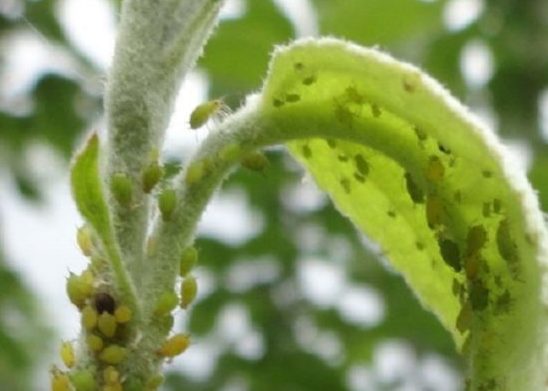
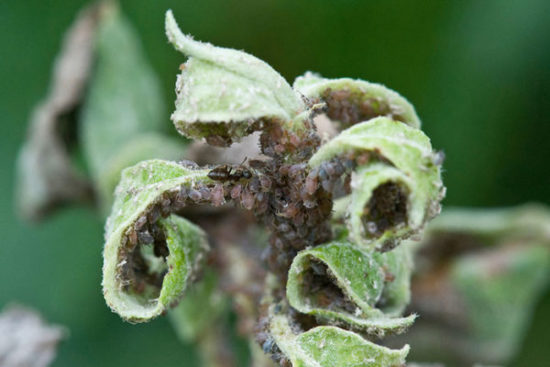
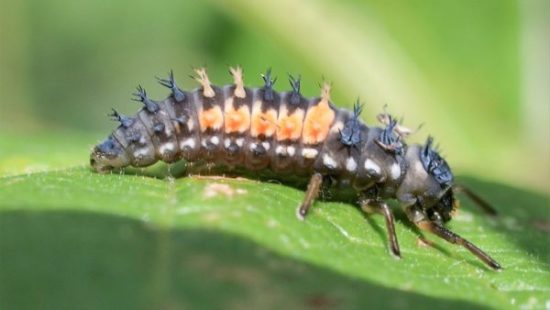
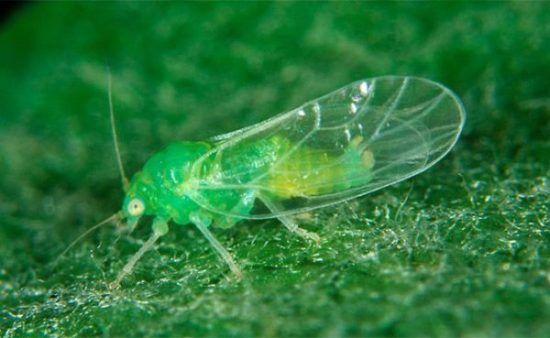
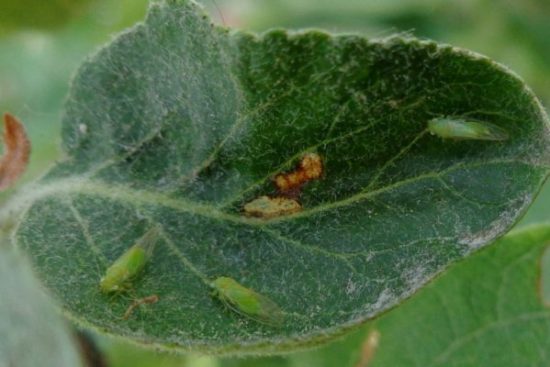
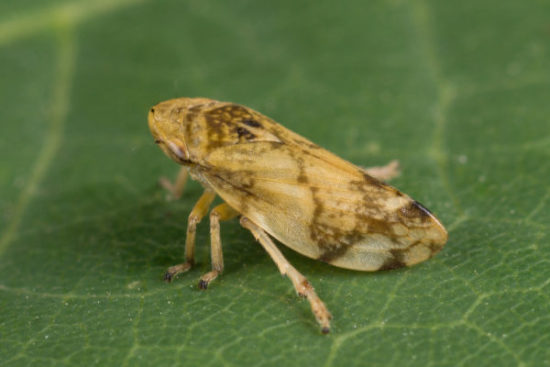
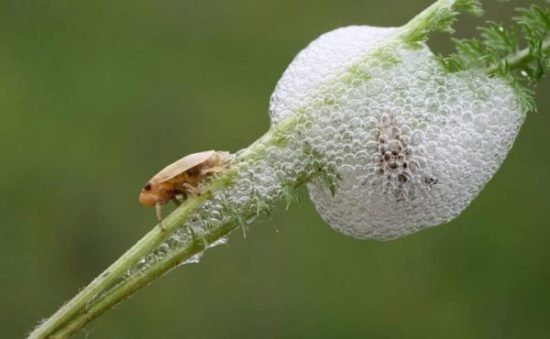
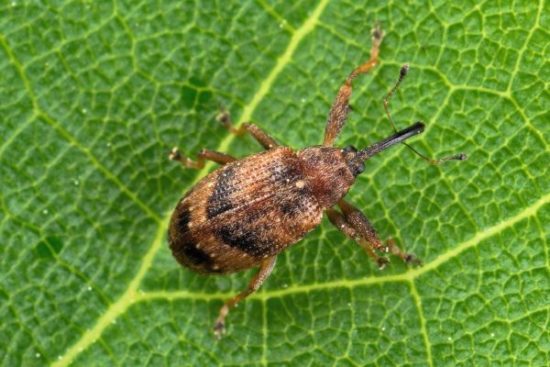
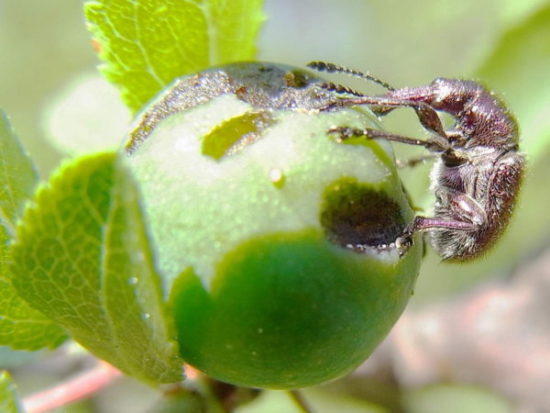
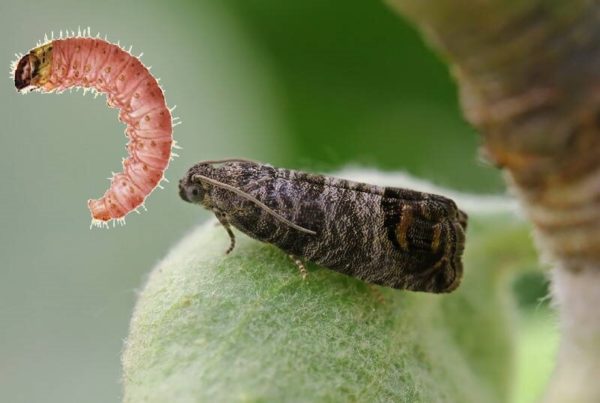
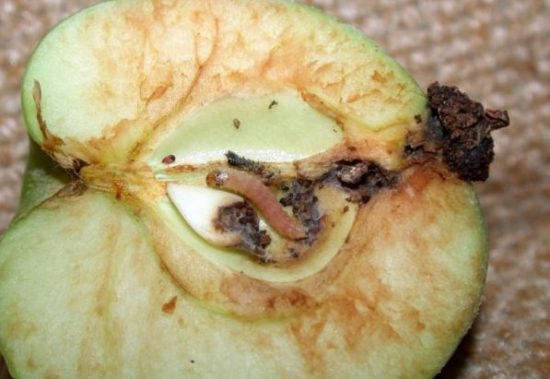
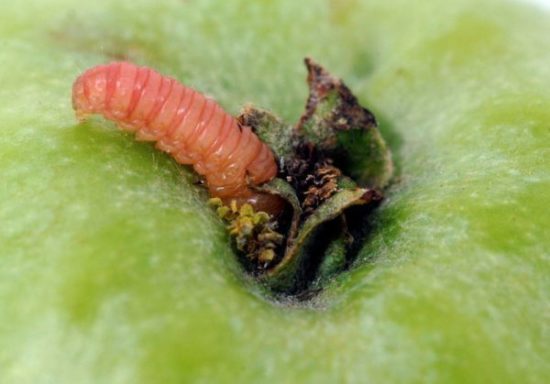


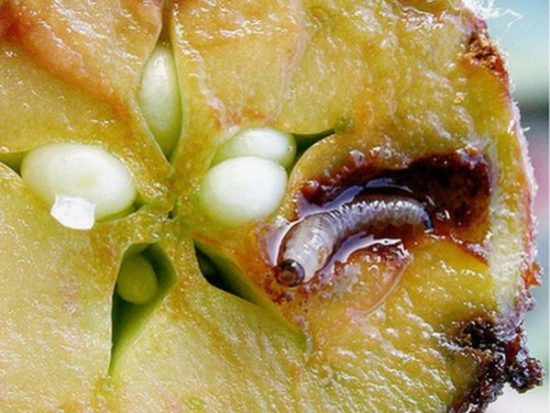
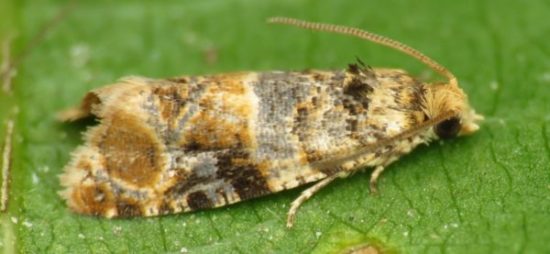
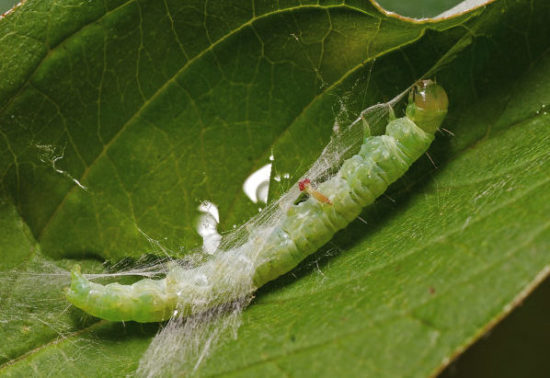
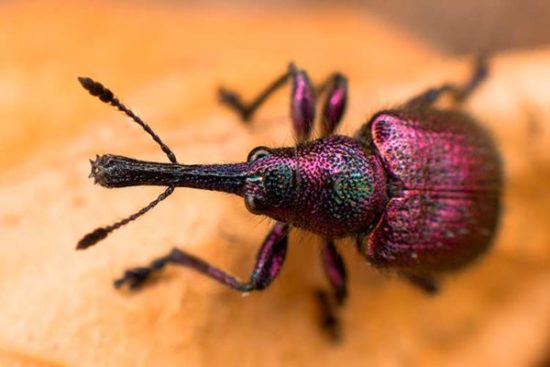
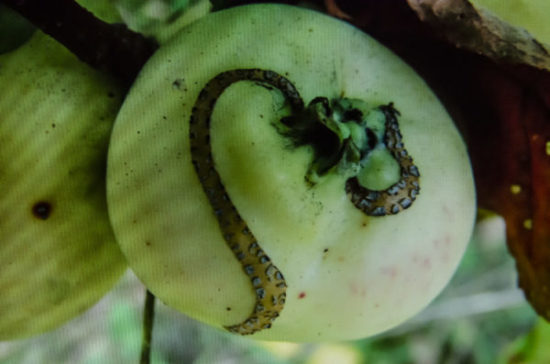

 CUCUMBERS NEVER GET SICK, I'VE BEEN USING ONLY THIS FOR 40 YEARS! I SHARE A SECRET WITH YOU, CUCUMBERS ARE LIKE THE PICTURE!
CUCUMBERS NEVER GET SICK, I'VE BEEN USING ONLY THIS FOR 40 YEARS! I SHARE A SECRET WITH YOU, CUCUMBERS ARE LIKE THE PICTURE! You can dig a bucket of potatoes from each bush. Do you think these are fairy tales? Watch the video
You can dig a bucket of potatoes from each bush. Do you think these are fairy tales? Watch the video
 How our fellow gardeners work in Korea. There is a lot to learn and just fun to watch.
How our fellow gardeners work in Korea. There is a lot to learn and just fun to watch. Eye trainer. The author claims that with daily viewing, vision is restored. They don't charge money for views.
Eye trainer. The author claims that with daily viewing, vision is restored. They don't charge money for views. A 3-ingredient cake recipe in 30 minutes is better than Napoleon. Simple and very tasty.
A 3-ingredient cake recipe in 30 minutes is better than Napoleon. Simple and very tasty. Therapeutic exercises for cervical osteochondrosis. A complete set of exercises.
Therapeutic exercises for cervical osteochondrosis. A complete set of exercises. Which indoor plants match your zodiac sign?
Which indoor plants match your zodiac sign? What about them? Excursion to German dachas.
What about them? Excursion to German dachas.